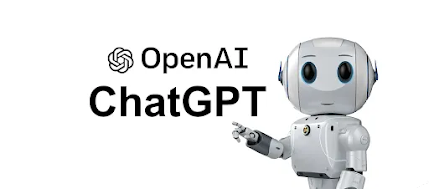As an AI language model, I cannot "kill" Google or any other search engine, nor can I spark an AI chatbot race on my own. However, I can provide some information on the topic.
ChatGPT is not a Google killer or any other search engine killer. It is an AI language model created by OpenAI, designed to generate human-like responses to text inputs. ChatGPT is just one example of the many AI chatbots and language models that exist today.
The development of AI chatbots has been ongoing for many years, with companies like Microsoft, Amazon, and Google investing heavily in this technology. These chatbots are used for a wide range of applications, including customer service, virtual assistants, and even mental health support.
The emergence of ChatGPT :
Other advanced language models has sparked a renewed interest in AI chatbots and their potential applications. However, this does not mean that there is a race to create the most advanced chatbot or to replace existing search engines. Instead, the focus is on using these technologies to improve human-machine interactions and to provide better and more personalized services to users.
Chatbots are computer programs that use natural language processing (NLP) and machine learning to simulate human-like conversations with users. They can be programmed to respond to specific keywords or phrases, or they can use advanced AI algorithms to generate responses based on context and previous interactions.
The development of AI chatbots has been fueled by advances in machine learning and natural language processing, as well as the growing demand for more personalized and efficient customer service. Chatbots can be used to automate routine tasks, provide 24/7 customer support, and improve the overall customer experience.
ChatGPT:
One of the most advanced language models currently available, with a capacity of up to 175 billion parameters. It was trained on a massive corpus of text data and is capable of generating human-like responses to a wide range of inputs. However, ChatGPT is just one example of the many AI chatbots and language models that exist today.
The use of AI chatbots is expected to continue to grow in the coming years, with many companies investing in the technology to improve their customer service and support. However, there are also concerns about the potential impact of chatbots on employment, as they may be used to replace human customer service representatives in some cases.
Overall, the development of AI chatbots is part of a broader trend towards the use of AI and machine learning in a wide range of applications. While there is no "race" to create the most advanced chatbot or to replace existing search engines, the continued development of these technologies is expected to have a significant impact on the way we interact with computers and with each other.
AI chatbots can be used in a wide range of applications, including customer service, sales, marketing, and even mental health support. They can be deployed on websites, messaging platforms, and social media channels, allowing users to interact with them in a variety of ways.
One of the key benefits of AI chatbots is their ability to provide personalized and efficient customer support. They can handle routine tasks, such as answering frequently asked questions, without the need for human intervention. This frees up human customer service representatives to focus on more complex tasks and issues.
AI chatbots can also be used to gather information about users, such as their preferences and interests, and to use this information to provide more personalized recommendations and services. This can help companies to build stronger relationships with their customers and to improve customer loyalty.
However, there are also challenges associated with the development and deployment of AI chatbots. One of the main challenges is ensuring that the chatbot is able to handle a wide range of inputs and respond appropriately to different contexts. This requires sophisticated machine learning algorithms and NLP models, as well as extensive training and testing.
Another challenge is ensuring that the chatbot is able to maintain a consistent tone and style of communication, even in the face of unexpected inputs or difficult customer interactions. This requires careful attention to the design and implementation of the chatbot, as well as ongoing monitoring and refinement.
Despite these challenges, AI chatbots are expected to play an increasingly important role in customer service and support in the coming years. As the technology continues to improve, we can expect to see even more sophisticated and capable chatbots that are able to handle a wide range of tasks and provide even more personalized and efficient service to users.













0 Comments
Thanks for your time reading my blog.Please leave a comment letting me know if you have liked the my blog.